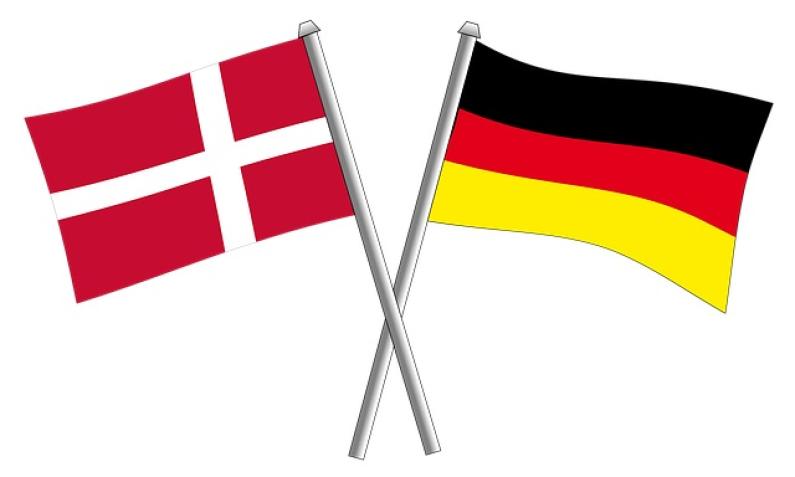
The border between Germany and Denmark is 67 kilometres long and is precisely defined. From 811 onwards, the Eider River was recognised to be the border line between the two countries, but in 1920, after a changeable period in history and as a result of a referendum, the border was moved to a position north of Flensburg between North and Southern Schleswig.
Today, in their respective border areas, Danes and Germans live in friendly and people-uniting communities that promote cultural exchanges and support minorities on both sides. In addition to the many similarities between the two countries, however, there are also clear differences between the Germans and the Danes.
The Germanic language family – commonalities and differences
The Danish and German languages both descend from the Germanic languages family. However, Danish, together with Norwegian, Faroese and Icelandic, comes from North Germanic languages and German comes from West Germanic. In addition to their many similarities, there are also many differences in the everyday use of the language. Some words sound very similar but are completely different in meaning.
If a Dane finds something "smuk", it means he finds something beautiful. In German Schmuck means jewellery. In Danish, the term "tydelig" means that a person is clear about something. In German, "tüddelig" sounds similar, but it is more likely to mean a person who is a bit confused.
In addition, Danish pronunciation is considered rather difficult to understand, even compared to other Scandinavian languages. Differently pronounced consonants can cause more trouble when someone is learning the language than learning the comparatively simple grammar. Although German has been part of the school curriculum in Denmark since 2014 as a second foreign language from the 5th grade onwards, it is not spoken that often.
Different forms of address
Germans use a formal form of address when meeting someone for the first time, and not only in business. The Danes, on the other hand, are on first-name terms with everyone, regardless of gender, age or social position. They even list participants in business meetings alphabetically by their first names.
As is the case in Switzerland, the Danish don’t use academic titles in conversation, whereas in Germany it is quite important to be addressed by your title.
Casual staff and management get-togethers are rather rare in Germany, whereas in Denmark they regularly enjoy getting together at work.
Another obvious difference in the way in which business is conducted on both sides of the border concerns dress. Germans attend important meetings wearing a suit and tie. Danes, on the other hand, dress more casually and no differently for an official appointment than they would normally do in their everyday working life. Attending a first business meeting in jeans and a shirt is completely normal for the Danes, whereas in Germany even not wearing a tie is regarded as careless.
Mother Denmark and the German Fatherland
Another noticeable difference between Germany and Denmark is the way that the two countries define themselves. Mother Denmark, as the Danes call their homeland, takes care of her people, while in Germany the Fatherland (the state) controls its citizens more strictly.
This somewhat exaggerated picture shows the fundamentally different feelings towards their own countries. Germans live in a culture of politeness and attach great importance to clear manners, while the Danes tend to live in a culture of friendliness and treat everyone equally, regardless of their relationship with each other.
and receive an answer within a few hours
- Choose the service you require
- Get a quote
- Confirm and receive your order
FAQ about the differences between Germany and Denmark
Do Germans and Danes have a different sense of humour?
Danish humour is considered to be self-deprecating and sarcastic. People like to make fun at others who are present, but they can also easily take jokes about themselves. In Germany, people tend to laugh about people who are not present and the humour itself is dry but less harsh than Danish humour.
What do business relationships between Danes and Germans look like in practice?
Germans love structure, and every meeting follows a strict protocol, with who is responsible for what being precisely defined. In Denmark, people meet and then work out together how to approach a project. The Danes very much appreciate the direct approach of their German partners however, and the Germans also benefit from the Danes' relaxed approach.
What does the term "hyggelig" mean?
The idea of hygge as cosy domestic bliss is popular. Hyggelig is synonymous with feeling cosy, comfortable and secure. People take pleasure in their surroundings and take time to eat etc. In hyggelig living, soft colours and natural wood tones dominate furnishings to create a homely atmosphere.
Add new comment